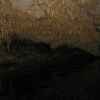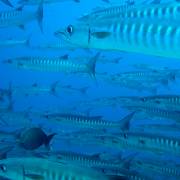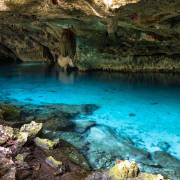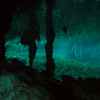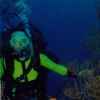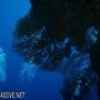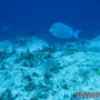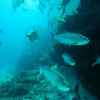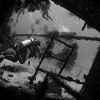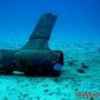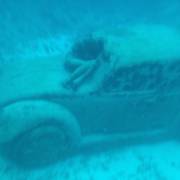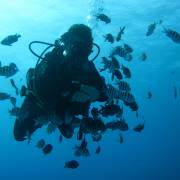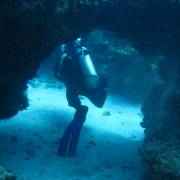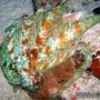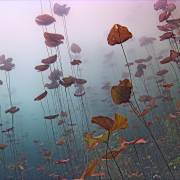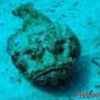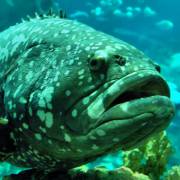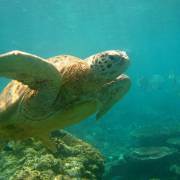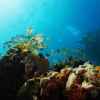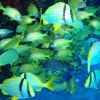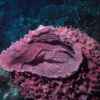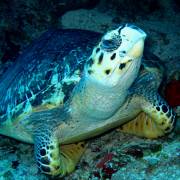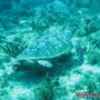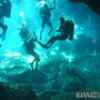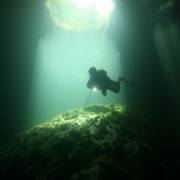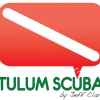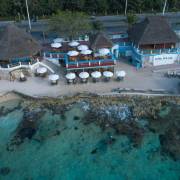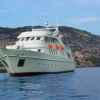Dive in Mexican Caribbean
-
Punta Sur Cozumel, Mexico
WARNING: Experienced divers only!Starts just after "Devil's Throat" with a great drop-off. Large groupers, turtles... There is a cave named "The Cathedral" with large sponges. -
Palancar Reef Cozumel, Mexico
This was my first experience of a coral garden.I didn’t realise it wassuch a literal phrase, believing it to be more of an accepted term for acoral collective.Palancar reef is very garden like.In the clearwater against the pale sand, the coral colours are breathtaking as theypeek from caves… -
Cenote Dos Ojos Playa Del Carmen, Mexico
This is a Cavern Dive...Not a Cave Dive. Crystal fresh water and lots of Stalactites, stalagmites and columns.Good buoyancy required. -
Chac Mool Cenote Playa Del Carmen, Mexico
This is a cenote, essentially a technical dive.Most of the dive is dark, light required.Also there is no open water overhead for most of the dive.We went on a guided dive.There are two cenotes in the immediate area a short walk from parking.It was a fantastic dive with interesting geological… -
Las Redes Akumal, Mexico
This site was named by the original explorers of the Akumal reef for the giant commercial fishing net that was found blanketing it. Now, the net has been removed, but the marine life still abounds. Las Redes is known for the abundant marine life, schooling fish, barracudas, stingrays, lobsters and… -
Dick's Reef Akumal, Mexico
This site was named after Old Dick, the now retired former owner of The Original Akumal Dive Shop. This is the most topographically diverse dive site in Akumal with coral structures that reach 20 feet (6m) from the bottom to interspersed islands of coral in the sand.For you brave divers, ask any of… -
Xaak Akumal, Mexico
This 60-90 ft. dive site, located about 15 minutes north, is a very special dive. Reef fingers reach up to 30 feet from the sea floor. Turtles, nurse sharks, rays, and a bright spectrum of fish are common sightings here. -
La Poza de Sabalos Xcalak, Mexico
5 minutes boat ride from shore. Tarpon all year round. Sometimes you can see Turtles, Eagle Rays, Sting Rays, Nurse Sharks, Morey Eels... -
Poza Rica Xcalak, Mexico
The kind of Dive Site where you can spend your whole dive in a few square meters and find lots of interesting stuff. -
Cenote Dos Ojos Cenotes, Mexico
Dos Ojos is a flooded cave systemlocated south of Playa Del Carmenand north of Tulum, on the Caribbeancoast, in the state of Quintana Roo,Mexico. The exploration of Dos Ojosbegan in 1986 and has never stoppedsince. The documented underwaterextend of the cave system is atleast 61 km.Dos Ojos has… -
Gran Cenote Cenotes, Mexico
This cenote is part of thesystem Sac Aktun which means white cave in Maya. In 2007 a team of cavediver discover the connection between this system and Nohoch Nah Chichand now we have the biggest system of underwater caves in the wold(157km ).Gran Cenote is located 4 km outside Tulum in Coba… -
Angelita Cenote Cenotes, Mexico
This dive site is must do for advanced divers who are looking for something a little different . The name means " angel " in English and can not be a better way to describe this magical place . The setting is perfect as a short walk through the jungle to the rather large hidden away cenote . To… -
C-53 Xicotencatl Cozumel, Mexico
The Xicotencatl was sunk June 6, 2000. It is 184 feet long & 33 feet wide. -
Columbia Deep Cozumel, Mexico
-
Paso del Cedral Cozumel, Mexico
Cedar Pass Reef is one of Cozumel's most colorful reefs, teaming withschools of grunts and snappers. Divers are typically greeted by a largeBarracuda that hovers over the reef. Turtle are commonly seen heremunching on the sponges, often ignoring the divers and photographers.The reef is full of… -
San Francisco Cozumel, Mexico
This wall starts at 50 feet and drops into the abyss. Drift along and observe the coral and schools of fish. -
Santa Rosa Wall Cozumel, Mexico
Great dive site. Supreme and probably one of the best not only in Cozumel but the Caribbean. Plenty of big fish as well as little fish and water clarity is amazing. Even at depth, the surface looks closer than it really is. -
Tormentos Reef Cozumel, Mexico
This is a typical nice second dive. -
Sabalos Playa Del Carmen, Mexico
Originally named after the schools of Sabalos/ Tarpon that can still ocasionally been seen here. The reef consists of healthy hard and soft corals of all variations. There are many kinds of fish as well as Starfish on the sand. Near the end of the dive you will find a small cavern for exploration. -
Mama Vina Playa Del Carmen, Mexico
This former shrimp boat was intentionally sunk in 1995 for divers. Since then the coral growth has [proceeded rapidly. Once on the wreck descend to the sand and drift along the side of the wreck until you reach the stern where you will find the propeller. Then move up into the lower decks and… -
Cave of Sleeping Sharks Isla Mujeres, Mexico
Discovered in the late 1960s by Jacques Cousteau, just north off the island Mujeres is the Cave of the Sleeping Sharks, a localfavourite and a good place to see sharks at their most passive due tolow salt levels in the water. -
Motorcycle Reef Akumal, Mexico
At the shallow end of this dive site, lying in the sand, is a 15 year old, coral overgrown motorcycle where you can always find schools of feeding fish, arrow crabs, and southern rays. This reef is laced with a large variety of soft corals, which makes it a good spot to see feeding turtles. -
C-58 Wreck Cancun, Mexico
The C58, also known as General Anaya, is a shipwreck popular with scuba divers. It is located in the Caribbean waters of Mexico, off the coast of Quintana Roo. The ship is a former US navy vessel used as a minesweeper during World War II – originally named the USS Harlequin -- that passed… -
Manchones Cancun, Mexico
The Manchones Reef is a popular dive spot on Mexico’s Mesoamerican Barrier Reef (also known as the Great Mayan Reef), on the Caribbean coast of Quintana Roo.Along with remarkable coral formations and diverse marine life, the Manchones Reef area is also home to MUSA, an underwater sculpture… -
C- 56 Juan Escutia Puerto Morelos, Mexico
The Wreck Name is C- 56 JUAN ESCUTIA, it is a 150 feet long war ship purchased from the US NAVY after the Second World War along with 5 others sister ships. It was sunken in front of Puerto Morelos Town in 1996 as part of an Artificial Reef Program. This shipwreck is fully covered in coral and has a… -
Barracuda Playa Del Carmen, Mexico
Barracuda is traditionally the second dive after the Tortuga Reef . Picture this reef as a hand with five finger like outcroppings. There are many small holes to explore along the reef and with a sharp eye and some luck you may spot some Barracuda patrolling the reef. Near the end of the dive it is… -
Media Luna Isla Mujeres, Mexico
A marvelous reef near the surface. You can dive along its channels, dive up and down through arches and bridges. Admire the colorful coral and the shrimp and lobsters. You will find two caves with sharks, jewelfish groupers, large sea anemone, spiny sea, urchins and more. -
Yal-Ku Lagoon Akumal, Mexico
Situated directly in front of Yal-ku Lagoon, this shallow dive site (20′-50′) is the most famous feeding site around, due to its constant flow of nutrients in and out of the lagoon. Under the extensive and climbing Elkhorn coral structures, there are various tunnels to swim through.… -
Grampin Cancun, Mexico
-
Chankanaab Bolones Cozumel, Mexico
Large coral heads scattered all over the bottom. Plenty of local marine life. The Atlantis submarine occasionally visits the site and can be seen by divers. -
Columbia Reef Cozumel, Mexico
This is a great dive for photographers wanting maximum bottom time. Good second dive also. -
Cordona Reef Cozumel, Mexico
-
Cozumel plane wreck Cozumel, Mexico
Plane wreck dive off of Cozumel.located in front of the EL CID hotel (formerly La Cebia )Good place for check out dive -
Las Palmas Shallows Cozumel, Mexico
Many schools of fish are found near the reef. It's slightly sandy so try to stay away from the bottom. Slants smoothly to a wall. Most action is near the top or above the slant. -
Palancar Deep Cozumel, Mexico
This is an amazing dive site. It became globally famous after Jacques Ives Cousteau dived the reef. It features many huge coral columns. Lots of fish are visible on this dive and the water clarity is fantastic. -
Palancar Horseshoe Cozumel, Mexico
-
Paraiso Bajo Cozumel, Mexico
Very plentiful and abundant reef with lots of fish, coral, and sponges. Lobsters and eels are seen on the site at times. Makes a great dive for everyone, even new novice divers. -
Punta Dalila Cozumel, Mexico
-
Punta Sur - Devil's Throat Cozumel, Mexico
The Devil's Throat at Punta Sur is an underwater cave formation located offshore of Cozumel that starts at approximately 80 feet of depth and opens up at approximately 135 feet - right at the edge of recreational dive limits.The Devil's Throat is considered a "must dive" experience by scuba divers… -
Punta Tunich Cozumel, Mexico
-
Villa Blanca Cozumel, Mexico
-
Yucab Reef Cozumel, Mexico
-
Eagle Ray Wall Cozumel, Mexico
Strong Corrent & windy / Drift dive start at 60 ft or 20 mts / pause at cut in the wall to with for eagle rays from Dicember to Marchonly.Rich wall dive with big fish and reef fishes -
Cenote Carwash Playa Del Carmen, Mexico
-
Cenote PonDeRosa Playa Del Carmen, Mexico
-
Cenote Taj Mahal Playa Del Carmen, Mexico
beautiful cenote with three rooms in which light enters from above in a beam that leaves you puzzled. Halocline hallucinations -
Chun-zumbul Playa Del Carmen, Mexico
-
Coco Beach Playa Del Carmen, Mexico
-
Jardines Playa Del Carmen, Mexico
-
Mamitas Playa Del Carmen, Mexico
For the cooler months of the year between November and March you can experience a shark dive that'll set your heart racing and adrenaline pumping. Every day we experienced about ten female Bull Sharks that came in close enough to touch and I have videos to prove it.Just a few hundred metres from the… -
Punta Tunich Playa Del Carmen, Mexico
Big grouper and playful green moray eels. -
Tortugas Reef Playa Del Carmen, Mexico
Tortugas Reef is one of Playa del Carmen most popular dive site due to the large amount of sea turtles, which live here. The reef is covered by corals and sponges, where it is common to find king crabs, nurse sharks, angelfish, groupers and tarpons among other type of marine life. As a recreational… -
Cerebros Playa Del Carmen, Mexico
Cerebros, meaning 'Brain' in spanish is the Northern most reef. The coral formations at the edge of the reef create a scenic landscape to wander around. Along the middle section and at the end of the reef you will find some beautiful arches to swim through. -
Pared Verde Playa Del Carmen, Mexico
This famous wall is very different in formation from the classical endless 'drop off' reef. Pared Verde has sections of walls which are split by sloping hills of sand. The spectacular coral formations are full of small and large marine life. Watch out for spiny lobsters, King crabs, turtles, sting… -
Los Arcos Playa Del Carmen, Mexico
Named after its two arches. Los Arcos is a relatively deep dive. The wall sections are 5m (15 ft) in height and are covered with hard corals, sponges and fan corals.On the sandy areas divers can find turtles, groupers and stingrays. The arches shelter schools of fish, Moray eels and many… -
Punta Venado Playa Del Carmen, Mexico
This amazing dive site is the southern-most reef in the area and is popular for its beautiful soft and hard corals. Punta Venado generally has a moderate to strong current that takes you past the amazing corals, moray eels, turtles, rays and schools of fish. In the winter season (Dec-Mar) you also… -
Bull Shark Dive Playa Del Carmen, Mexico
Bull Shark Dives usually take place in the afternoon from November to February.Although Bull sharks grow slowly, their average size is about 400cm/12ft to 650cm/19ft and they reach a maximum total length of probably 800cm/24ft. It feeds on fishes, other sharks, turtles, birds, invertebrates and even… -
El placer Isla Mujeres, Mexico
place for diving with a little drift, very colorful coral formations. -
El Hondureño Isla Mujeres, Mexico
An amazing tour where you will swim around a part of a sunken boat, lots of fishes, barracuda, pampanos, and turtles. -
Cañonero Chairel Isla Mujeres, Mexico
Strong drift, located about 25 minutes away when going by boat. A great dive inside this navy boat, explore the bathrooms, the office, passing by the guns. You will see schools of barracudas and snappers. -
Gonzalo'z Reef Akumal, Mexico
This site is decorated by large, vivid reef fingers. You are guaranteed to see Hawksbill, Green, and Loggerhead turtles here feeding, playing, and checking out the visiting divers. -
Aristos Cancun, Mexico
-
Bandera Reef Cancun, Mexico
For high advanced level divers, drift dive. Bandera reef is a long coral reef topped with elk horn coral. National park for schools of barracudas, turtles, lumberjacks and pampano swimming over the reef. -
Chitales Cancun, Mexico
This is a very popular reef of Cancun. -
Cuevas de Afuera Cancun, Mexico
Diving place where , giant sea turtles and eagle rays may be seen. -
El Meco Cancun, Mexico
A great place for learning to dive or just to spend the morning diving and snorkeling.There are companies that provide tours via jetski for snorkeling.There have been Turtle, Porpoise and Barracaduda -
El Tunel Cancun, Mexico
Diving place where medium to strong currents are registered. This is a very large cave (reef like) with fish, turtles and dolphins. -
Herradura Cancun, Mexico
-
La Boya de los Locos Cancun, Mexico
-
Punta Negra Cancun, Mexico
-
San Toribio Cancun, Mexico
-
Santo Remedio Cancun, Mexico
-
Sleepy Shark Caves Cancun, Mexico
A famous diving place investigated by Jaques Costeau, who documented this amazing phenomenon; sleeping sharks soaking up fresh water bubbles percolating from below. The species that you could see are: Lemon sharks, Bull sharks, Blacktip sharks, Amberjacks, Manta Rays. Because of the constant… -
Ultrafreeze Wreck Cancun, Mexico
Ultrafreeze – also known as El Frio -- is a 200-foot long shipwreck in Mexico, off the Caribbean coast of Quintana Roo. The vessel was a cargo ship/ tugboat deliberately sunk to create an artificial reef.The hull of Ultrafreeze is virtually intact, and the site is known as afantastic dive in… -
Underwater Museum in Cancun Cancun, Mexico
MUSA (Museo Subacuático de Arte) is an underwater museum in the waters surrounding Cancun and Isla Mujeres in Mexico. The project was created by artist Jason deCaires Taylor and consists of 400 permanent life-size sculptures on the ocean floor.Each of the sculptures is made from materials… -
Escalones Mahahual, Mexico
It is located in front of Quinto Sol Hotel and Tequila Beach Club there is one of the most interesting dive sites in the area. Here is really easy to see groups of turtles and eagle rays. -
Faro Viejo Mahahual, Mexico
This is the Mahahual village's norther dive site, behing the cruisers dock. The reef is broken in pieces, with archs and a soft continous current. -
Jardin Mahahual, Mexico
-
Punta Rio Bermejo Mahahual, Mexico
This is the southern site in Mahahual coast, located in front of the exit of the mangrove water making the water colored in red. Here there are two other dive sites: Laberinto (Maze) o Las cañadas. -
Dos Ojos Mahahual, Mexico
This site is located south of fishermen dock. It is known as 'Dos ojos' (Two eyes) because it is broken in two big sandy areas. This place is very shallow water being special for Discover Scuba Diving, beginners, second dives or nigth dives. -
La Pared Puerto Morelos, Mexico
Great site to view shallow water corals, good night/beginner dive site! -
Neto's Puerto Morelos, Mexico
Coral heads reaching the surface. Good sandy areas for training. Visibility can vary considerably depending on weather conditions. -
Rodman Puerto Morelos, Mexico
Visibility and current can vary hugely from day to day. From 5' Visibility to 100' and 0 to 4+ Knot currents. Almost always strong surge as waves break overhead. -
Puentes Puerto Morelos, Mexico
The reef Puentes is a a 20m/ 60ft dive with natural bridges and swim throughs where you can find reef life and larger fish. -
The Gardens Puerto Morelos, Mexico
The Gardens is a 17m/ 45ft dive which allows you to swim through the beautiful, colorful coral reef while seeing multitudes of different sizes and colors of fish. -
Tarpon Hole Xcalak, Mexico
- -
XCaret - Snorkeling Lagoon Xcalak, Mexico
Snorkeling and children. Outside, good dive site. -
La Chimenea Xcalak, Mexico
- -
La Catedral Xcalak, Mexico
You will drop down the wall to 60 feet, then swim along the face until you reach the opening to “La Catedral”. This is a huge cavern that has a large debris stone in the center. You can also dive along this beautiful coral wall.Huge tarpon, barracuda, and schools of silver sides dance in the… -
Alejandro's Reef Xcalak, Mexico
- -
Santa Julia Xcalak, Mexico
- -
Doña Nica Xcalak, Mexico
This site has 2 distinct coral formations-a shallow wall from 30-50 feet facing sand flats. This is a favorite site for instructions as the depths are shallow, it has soft sand for doing training exercises, and lots of marine life. We also use it for night dives due to large numbers of lobster and… -
Hob Na (Grouper Hangout) Xcalak, Mexico
- -
Cenote Azul Xcalak, Mexico
In the unlikely event that the sea is too rough to dive Xcalak, dive centers offer a two tank trips to Cenote Azul and Bacalar, the Lake of Seven Colors.Cenote Azul is the largest pit cenote in Mexico, 600 feet across and 290+ feet at the center. The diving here is the most bizarre and thrilling… -
Mesoamerican Barrier Reef Mexican Caribbean, Mexico
The Mesoamerican Barrier Reef System, also known as the Mesoamerican reef or Great Mayan Reef, stretches over 600 miles from Isla Contoy at the northern tip of the Yucatan Peninsula to the Bay Islands in Honduras. The reef system includes various protected areas and parks including the Arrecifes de… -
Chikin Ha Cenote Cenotes, Mexico
entrance fee -
Casa Cenote Cenotes, Mexico
This is one of the most interesting diving spots in the region, CasaCenote (Cenote Manatee) is located in the middle of mangrove, very closeto the ocean. This is one of the Aktum system output of freshwater tothe Caribbean sea. With open areas, this cenote is perfect for novicedivers and offers lots… -
Cenote Calavera Cenotes, Mexico
Originally called cenote Esceleto, then renamed during exploration for the Temple of Doom.There are incredibly beautiful limestone formations shaped by year by the aggressive salt water, also many fossils that can be found inside and outside the cave.After a brave jump and quite murky entrance you… -
Chaak Mol Cenote Cenotes, Mexico
Chaak mol is a vast complex of tunnels with over 3 entrances allowing cavern diving plus more depth of tunnels for experienced cave divers.The cenote provides outstanding light effects in the right time of the day and a halo cline where the mix of salt and fresh water happens. -
Snorkeling with whale sharks Holbox Island, Mexico
Swim up close in the natural environment of the Gulf Of Mexico with the Ocean's largest sish: The "whale sharks". These huge sea creatures are found off the coast of Holbox Island Mexico in the state of Quintana Roo near Cancún.The whale sharks are harmless & Non Threatening to humans. In… -
Tank Ha deep Tulum, Mexico
Tankah deep is a most exhilarating dive site. Itstarts with a back roll off the boat into the deep blue. The decent tothe 30m / 99 feet is captivating; you plunge deeper and deeper into theblue wondering when you will get a glimpse of the reef. Then suddenlythere it is. In all its spand plenty of… -
Sting Ray Tulum, Mexico
The pinnacle formations of this shallow dive site arefull of different species of coral and fish. This nice, easy, relaxingdive will incite you to be inspired. It is only a short boat ride fromthe beach, and is a good paring with ballena as a two-tank dive. -
La Piscina Tulum, Mexico
La Piscina is an absolutely beautiful section ofreef. Which overlooks the Tulum Ruins. It is a nice shallow dive, withlots of light. There are plenty of marine creatures to see, and lots ofcoral to amaze. -
Coquitos Tulum, Mexico
Coquitos overlooks the Tulum Ruins. It is very nearto La Piscina usually they are paired together as a two-tank dive. Theyare also very similar there is lots of beautiful coral, and plenty ofmarine life. -
The Garden Banco Chinchorro, Mexico
has excellent soft corals and sponges in the shallower areas and another patch reef in 60-80 feet of water -
Aquarium I & II Banco Chinchorro, Mexico
Aquarium I and Aquarium II, just south of Cayo Centro, are 16 meter anchor dives amid an abundance of sea fans and elkhorn coral. The sites frequently have large schools of blue tang. -
Dos Primas Banco Chinchorro, Mexico
DOS Primas, a 30-35 meter drift dive site between Cayo Centro and Cayo Norte, features immense sponges, large-sized black coral trees, and, frequently, large grouper. -
The Cut Banco Chinchorro, Mexico
The Cut is an 25 meter foot dive near the cut to Cayo Centro. It's located along a sloping wall that drops from 13 meter to 35 meter and is covered with antler corals, black corals, and gorgonians. This is a fishy site among big coral heads and canyons that has no significant current. -
Punta Isabel Banco Chinchorro, Mexico
Punta Isabel is located in front of Cayo Centro. It's an 25-30 meter drift or anchor dive among large sponges, gorgonians, and corals. There are often snapper, grouper, and barracuda as well as sea turtles, eagle rays, lobsters, and conch -
Paradise Banco Chinchorro, Mexico
Paradise is a shallow dive in about 13-16 meter of water in front of Cayo Centro. This anchor dive has a lot of elkhorn and brain corals, and usually plenty of blue tang, hogfish, and pink conch. -
Kai Ha Banco Chinchorro, Mexico
Kai Ha is a 35-60 foot dive just north of Punta Gonzalez that tends to be a very fishy site. -
Punta Gonzalez Banco Chinchorro, Mexico
Punta Gonzalez is a 13-30 meter drift dive with immense sponges, many large gorgonians, and usually a chance to see sea turtles, eagle rays, and lobsters. It is located in front of Cayo Centro. -
La Boya Banco Chinchorro, Mexico
La Boya is a great dive site with a flat sandy top at 10 metres, then a sloping reef wall with hard and soft corals that gives way at depth to another sand flat with some really enormous barrel sponges, yellow tube sponges and elephant ear sponges that must be about 3 metres across! Careful scrutiny… -
The Chinchorro Reef Wrecks Banco Chinchorro, Mexico
The Chinchorro Reef was known to sailors who dreaded it as early as the colonial period. Traveling from Cartagena, Colombia, to Spain by way of Havana, Cuba required ships to pass close to the bank. The winds and currents of the region worked against them, and many vessels went down at the reef. The… -
Unidentified Galleon Banco Chinchorro, Mexico
This wreck site contains a cargo of silver bars from Peru. -
Spanish Galleon Anchors Banco Chinchorro, Mexico
17th century ship containing 2 anchors and a large quantity of river stones that were used for ballast. -
SS Far Star Banco Chinchorro, Mexico
Far Star was a 1970s cargo boat laid down in 8 meter of water. A large steel-hulled transport ship, it was loaded with sugar when it ran aground on the southeast corner of Chinchorro. Starting just beneath the surface, the spur and groove reef structure is littered with a profusion of steel plating,… -
Pecio Ingles Banco Chinchorro, Mexico
Built around the 16th century. A canon, anchor, and money can be found. -
Kassel Banco Chinchorro, Mexico
German ship constructed in the 20th century out of steel. Ran aground in 1955.v -
SS Glen View Banco Chinchorro, Mexico
The Liberian Steamship Glenview ran aground on Banco Chinchorro off Yucatan, Mexico in latitude 18 degr. 37' N - longitude 87 degr. 15' W on January 24th 1964. While on ballast voyage from Puerto Barrios, Guatamala to Tampico, Mexico. The salvage tug 'Cable' reached the wrecked vessel 5 days later… -
SS Ginger Screw Banco Chinchorro, Mexico
Shrimp boat from the 20th century. The original name is Inger Shoal. -
Cuarenta Canones (40 Cannons) Banco Chinchorro, Mexico
The shallow bottom near Cayo Norte is littered with scores of brass cannon, some over ten feet in length. Dating to the 17th century, experts say these cannon suggest that this may be a Dutch wreck, or possibly even a pirate ship. There is also at least one very large cast-iron double-fluke anchor.… -
Copper Clad Wreck Banco Chinchorro, Mexico
Lying in 70 feet of water, what remains of the wreck are only the traces of the hull timbers, brass nails, and hand-hammered copper sheeting that once clad the hull to protect it against invasion by marine worms. This unusual cladding indicates that this wreck dates to the 18th century. The wooden…

